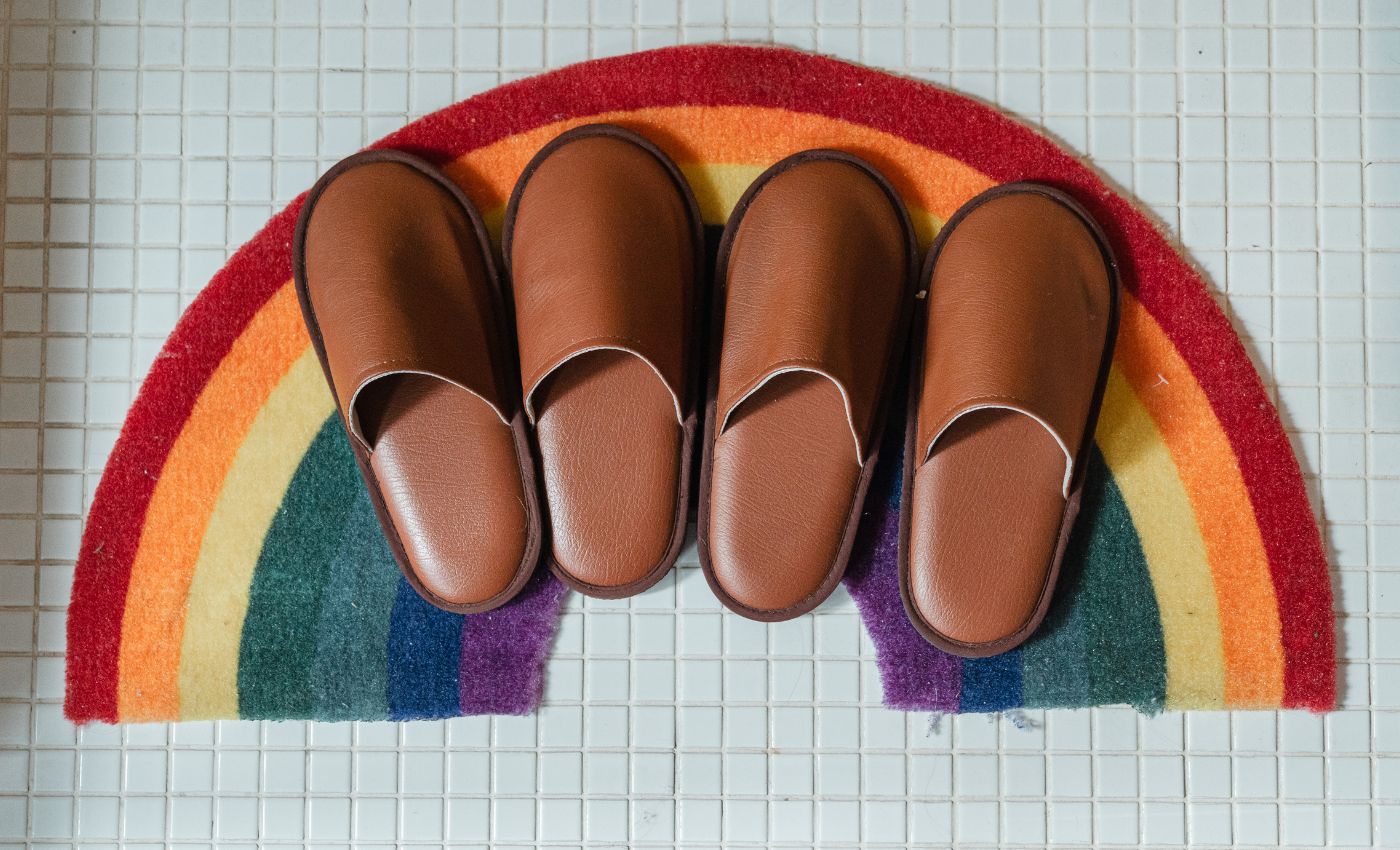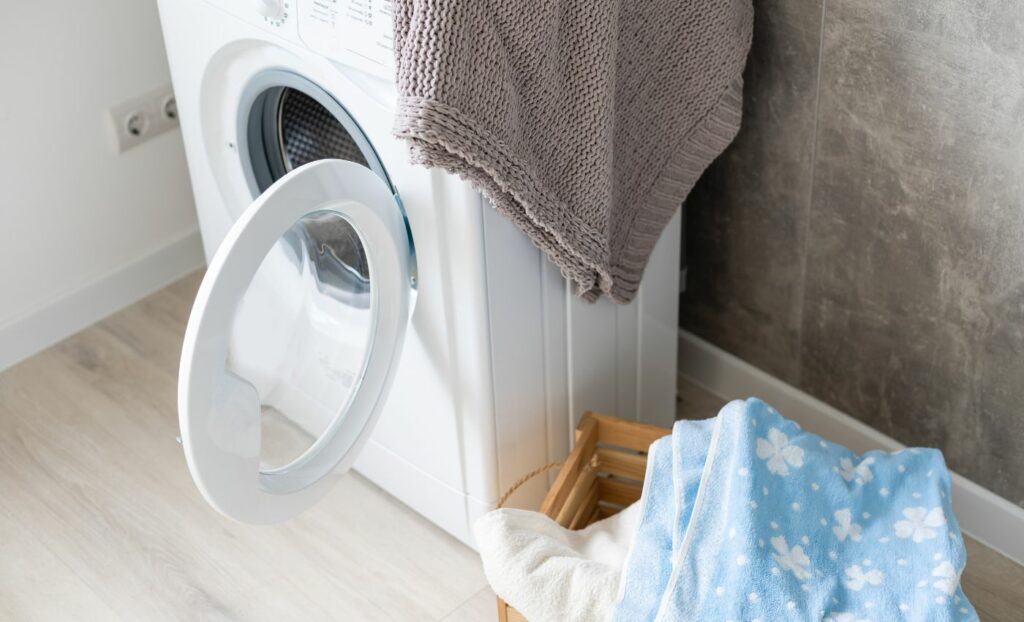Imagine stepping onto a comfy bathroom mat after having enjoyed a relaxing shower, sounds like heaven right? We don’t mean to ruin your fantastic dream, but there’s something you should know: underneath your feet likely lies microscopic little critters occuring thanks to the abundance of warmth and moisture. Bathroom rugs are a haven for mildew, […]

Imagine stepping onto a comfy bathroom mat after having enjoyed a relaxing shower, sounds like heaven right? We don’t mean to ruin your fantastic dream, but there’s something you should know: underneath your feet likely lies microscopic little critters occuring thanks to the abundance of warmth and moisture. Bathroom rugs are a haven for mildew, bacteria and even fungi (Yuck!). That’s why we’re here to help you break down how and how often to wash bathroom rugs!
Bathroom rugs are a magnet for hair and dust. Not only that, the moisture and warmth in bathrooms produce the perfect environment for mildew and bacteria to flourish. Obviously, the last thing you want to do after taking a refreshing shower is to step into a cesspool of microorganisms. Because of this you should wash your bathroom rugs regularly.
The frequency with which you launder your rugs is really going to depend on how often the rugis exposed to post-shower or -bathing moisture. You should wash your bath mat once a week if it gets so much use that it never dries. In contrast, if there are only one or two people living in your house and each of you takes a shower once a day, you may spread out your washings so that you only need to clean the bathroom rugs every two or three weeks.
Less time to dry means that mold and mildew have more chance to set in. Up the frequency even more if your bathroom has poor ventilation because mildew can grow more easily in a humid environment.
The kind of washing your rug can handle will also determine how often to wash it. If you can wash your rug in hot water with bleach and use a hot dryer, you will essentially be able to eliminate all the germs and mold from your rugs—and you won’t have to wash them as often. Alternatively, you can remove about 90% of the bacteria and mold by hand-washing your rugs in a mild detergent and letting them drip-dry.

Equipment:
Materials:

Before doing anything else, you should take out the bathroom rug and give it a good shake. This will get rid of debris such as lint, hair, and sand that has become lodged in the fibers (You’ll be shocked by how much dirt, dust, dander, and hair fly out of it). Additionally, if your bathroom rugs have plastic or rubber backing, go ahead and wipe that off with a dry microfiber cloth.

Pay extra attention to the care tag on the back of your rug so you don’t miss any important instructions. The instructions will tell you whether you can machine wash your rug, what water temperature to use, whether you can use bleach (and what kind), and how to dry it. Moreover, check the care tag to make sure you’re not supposed to use any specific cleaning products or washer and dryer settings.

If the bathroom rug has a skid-roof backing, flip it over and quickly check it. If the rubber is peeling and cracked, you should replace the rug. Another washing may add more loose pieces of plastic to your washer, damaging the water pump. A new bathroom rug costs a lot less than repairing a washer.

Remember to wash bathroom rugs with similar fabrics and colors. Add some extra bath towels to the load if you have them lying around. This helps prevent your washing machine from off-balancing and making those thunderous noises mid-cycle.
If you are washing several rugs in a top-loading machine with a center agitator, be sure to place them opposite each other so that the machine will stay balanced. Be careful not to overload.
Choose warm or hot water, and wash with your regular detergent if you want the water and detergent to reach every surface easily.


Drying bathroom rugs is simple. After taking your bathroom rugs out of the washer, give them a good shake (again) to remove wrinkles. Hang the rug from a clothesline, or place it over a drying rack to air-dry. Check the instructions again, if your care label warns against machine drying and you are able to line-dry your laundry, opt for that since sunlight is a gentle-yet-effective disinfectant.

Dealing with a rubber-backed bathroom rug? Don’t worry, just follow those steps above. But in the last step – drying your mats, you should pay more attention:
If possible, take the bath mat outside to dry in the fresh air and sunlight. Just hang over the fence or a chair.
If it’s not possible to use the power of the sun, then you’ll want to put them in the dryer for a little bit.
You can hang them on a rack to dry entirely because they might not be completely dry.

You wanna buy a new bathroom rug? Remember these tips before you choose your material:
Cotton is comfortable and simple to wash, but the longer it is left on a wet bathroom floor, the more thin and susceptible it becomes. Bamboo is superior, but durability comes at the expense of comfort. Polyester and nylon are the best materials to use in restrooms with high traffic since they are more durable and slip-resistant.

That’s all there is to it when it comes to learning how to wash bathroom rugs. And your feet will thank you for taking the time to wash bath mats regularly.
By following these tips, you’ll be able to keep your bathroom rugs looking like new for longer.
Bathroom rugs are an important part of keeping your bathroom clean and tidy so it’s important to take care of them. Just remember to use cold water, mild detergent, and never put them in the dryer!
In Sparkling and Beyond, we provide you with a lot of helpful tips to keep your bathroom and even your house sanitary! Not only giving guides, we also have a cleaning team to help you with your housework!
Feel free to contact us today! Our experienced cleaning experts are waiting for you!
If you want to check our availability and pricing, please check here
![]()